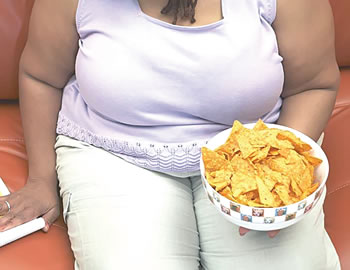So, the question that may pop up in many people’s minds is:
“How on earth do I tell if I am overweight or obese?”
Well, this article will give you all the answers you need to know because the truth is that one does not just stare at a person and declare that the person is overweight, there is an objective assessment that is supported by physicians worldwide and the World Health Organization.
This assessment is called the Body Mass Index.
What Is The Body Mass Index and How Do I Calculate It?
The Body Mass Index (BMI) is a measure of a person’s weight relative to the person’s height. It is an objective assessment of how much a person should weigh based on how tall he or she is. Now, the reason why this is a widely accepted measure is simple: if two people are of the same weight but one of them is 6 inches taller than the other, their body builds and likely amount of body fat won’t be the same. So, BMI balances it out.
Here’s how to calculate a person’s BMI:
Divide the person’s weight in kilograms by the square of the person’s height in metres. Its unit is kilograms per square metre.
Let’s take a practical example:
If Tola is a 25-year-old female who weighs 60 kilograms and is 1.60 metres tall, her BMI can be calculated by dividing her weight in kilograms (60) by the square of her height (1.60 X 1.60).
That is 60 divided by 2.56. This gives us a result of 25.44 kilograms per square metre.
Now that we have calculated Tola’s BMI, why not try to calculate yours too.
If you just calculated yours, you might be wondering what the result means, so this takes us to our next section.
How To Interpret A BMI Result
The BMI is classified to give an insight into the nutritional status of a person.
Here are the different BMI categories:
- Underweight- Less than 18.5
- Normal weight- 18.5- 24.9
- Overweight- 25.0- 29.9
- Obesity- 30 and above
So, in the case of our earlier example, Tola’s body mass index of 25.44 kilograms per square metre means that she is slightly overweight.
You can try to also categorize yours if you have already calculated your BMI.
So, if you are overweight, what can you do about it?
Practical Tips To Lose Weight
1. Eat Healthily
The first and most important step to lose weight safely is to control what you eat. If you are overweight or obese, it means that you are taking in more than what your body needs, hence, the rest is being stored as fat. So, you should try to cut down on the number of calories you are taking in.
Medically, we suggest that you take a balanced diet that contains the regular food classes in their adequate proportions. That is protein, carbohydrates, fats, oils, vitamins, and minerals. However, you can try to lower the number of carbohydrates and fats you ingest. For example, if you regularly took 6 slices of bread every morning and two wraps of eba on most afternoons, you can cut it down to 2 slices of bread and 1 wrap of eba. Try to also avoid quick calorie-rich snacks like when you hurriedly take a little pie that has been baked by a convection toaster oven.
2. Avoid Alcohol and Sweetened Soft Drinks
If you are trying to lose weight and still consume alcohol and soft drinks regularly, you are going to end up possibly gaining weight. Why? Alcohol contains a significantly higher number of calories per gram than your regular food. If you’re going to achieve any progress with weight loss, you must ditch the alcohol.
Also, soft drinks contain refined sugar in very large quantities. This gives you a big bolus of calories at one go without offering any particularly useful nutrition or making you feel satisfied.
3. Exercise Regularly
If you are overweight or obese, one way to get the scale reading a normal result is by exercising regularly. You can try to achieve this by setting up a schedule and not overwhelming yourself with a very strenuous plan. You can start with a few minutes every morning four times a week, then scale up. You should also set a target weight, and give yourself a realistic period to attain this target weight.
Dr Charles-Davies OA, a medical doctor based in Lagos. He writes health articles at 25doctors.com and serves as an editor for 93 Treats, a food and kitchen blog.






